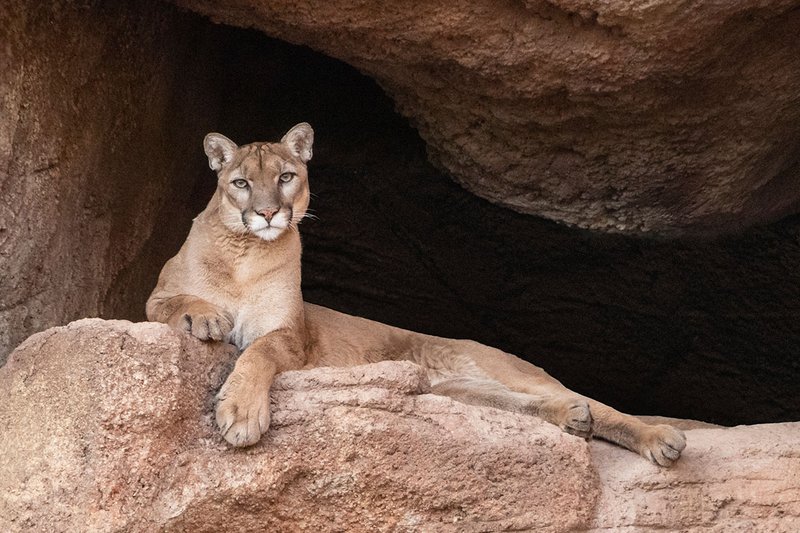
Let’s take a moment to visualize mountain lions. Picture a big cat, similar to your house cat but much larger—often weighing between 80 to 220 pounds. They have tawny fur, a long tail, and big ears. While they might look sleek and graceful, they are also stealthy predators. This duality is what makes them intriguing yet alarming. So, as we dive deeper, we’ll explore not just their behavior but also the risks they pose to humans.
Understanding Mountain Lion Behavior
Mountain lions are solitary animals, typically preferring to live alone rather than in packs. They are most active during dawn and dusk, making them crepuscular hunters. You might be wondering, how do they hunt, and why does this matter? Well, their primary prey includes deer, small mammals, and even livestock in some areas.
What’s fascinating is their hunting technique. They rely on stealth and surprise, often stalking their prey before leaping in for the kill. This ability to remain hidden helps them avoid confrontations, not just with their prey but also with humans. However, when humans encroach on their territory, things can get complicated.
Let’s say you’re hiking in the woods or living near mountain lion territory. It’s important to understand that these animals typically avoid human contact. They’d rather cross the street than face a person. However, a stressed mountain lion may react differently, especially if it feels cornered or threatened.
Are Mountain Lions Actually Dangerous?
Honestly, the chances of a mountain lion attacking a human are quite low. In fact, documented attacks are rare compared to other wildlife. According to the California Department of Fish and Wildlife, on average, there are only around 2-3 mountain lion attacks per year in the state. When you think of it, that’s a small number considering the vast number of people who hike and live in mountain lion territory.
However, it’s essential to stay informed and know the signs. If you encounter a mountain lion, the most important thing is to remain calm. Many attacks happen when a person is surprised or startled. In such cases, the lion may view you as a prey animal instead of another human being.
What can you do in that situation? Here are some tips:
- Stand tall and make yourself look bigger.
- Maintain eye contact; don’t turn your back.
- Make loud noises to assert your presence (shouting, clapping).
- Slowly back away; don’t run.
By following these guidelines, you can minimize the risk of being perceived as prey.
Factors Contributing to Mountain Lion Encounters
While mountain lion attacks are rare, certain factors can increase the likelihood of encounters. One significant factor is urban sprawl. As humans continue to develop land for homes and businesses, mountain lions lose their natural habitats. This displacement can push them into areas where people live, leading to more interactions.
Another contributing factor is food availability. In areas where natural prey is scarce, mountain lions may wander closer to human habitats in search of food. This can include pets or livestock, making it crucial to secure your yard or farm and properly store food sources.
The time of year can also play a role. During the mating season in late winter and spring, male mountain lions may travel further in search of mates, sometimes venturing closer to human environments. This behavior can lead to increased sightings and, in rare cases, confrontations.
How to Protect Yourself and Your Pets
If you live in mountain lion territory, you might be concerned about the safety of your family and pets. Here are some effective strategies to stay safe:
- Supervise pets: Keep cats indoors, and supervise small dogs when outside.
- Secure trash: Use animal-proof trash cans to avoid attracting wildlife.
- Fence your yard: If possible, build a tall fence to keep mountain lions out.
- Make noise: When hiking, talk loudly or make noise to alert wildlife of your presence.
It’s also a good idea to report any mountain lion sightings to local wildlife authorities. They can help track the animal and provide information on how to avoid future encounters.
What to Do After an Encounter
If you do happen to encounter a mountain lion, it’s important to know how to respond afterward. First, report the sighting or any aggressive behavior to the local wildlife department. They may track the animal and implement measures to ensure public safety.
Additionally, reflect on the encounter. What were you doing at the time? Were there any signs that might have warned you? This can help you prepare better for future outings.
Sharing your experience can also be helpful, not only for your awareness but for the community. It’s all about learning and adapting. Remember, mountain lions are part of the ecosystem and play a role in controlling prey populations, so managing human-wildlife interactions is vital.
So, can the mountain lion be dangerous to humans? The answer is nuanced. While mountain lions can be dangerous, the likelihood of an attack is very low. Most encounters can be navigated with the right knowledge and precautions.
Understanding their behavior and enhancing our safety measures allows us to coexist with these remarkable animals. Whether you live near their habitats or simply hike through their territories, a little awareness goes a long way. Embrace the beauty of nature, but always respect its boundaries. By doing so, you help keep both yourself and the mountain lions safe.

